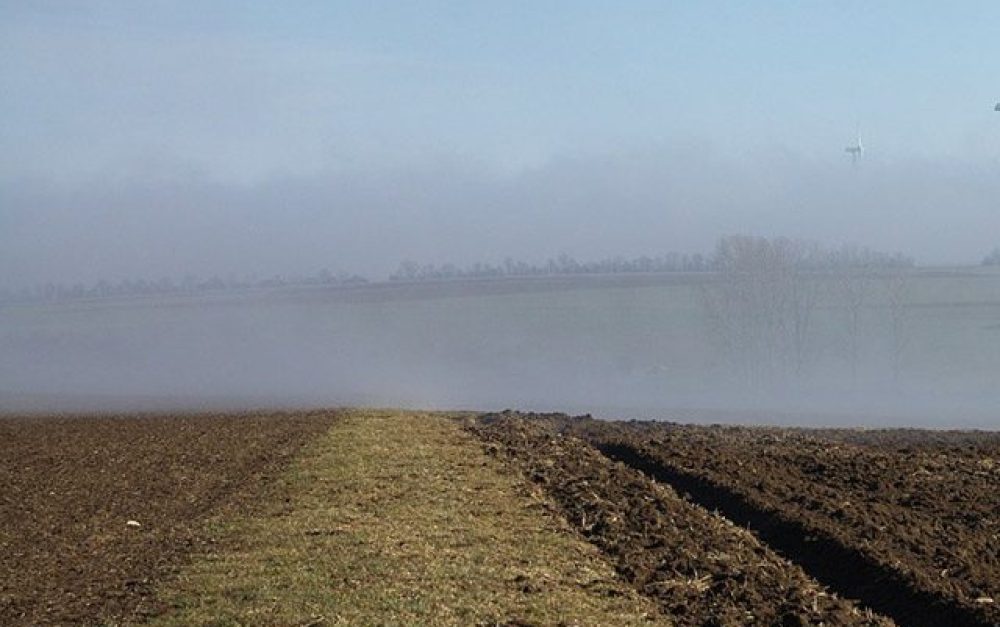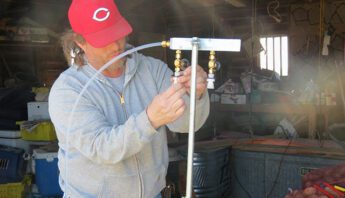Last week, California's Department of Pesticide Regulation (DPR) released new data from its statewide Air Monitoring Network (AMN). As you've heard from us before, pesticide drift can seriously impact the health and well being of people living in rural communities.
And it is happening. Even with DPR's flawed sampling plan, this latest round of data confirms health-harming drift at monitoring sites across the state. Of the 32 pesticides and five breakdown products assessed, 24 were detected at least once. At one site, the neurotoxic insecticide chlorpyrifos was found in 75% of the air samples taken.
This one example is particular cause for concern. Though the chlorpyrifos levels found were mostly low, this chemical has been shown to have adverse effects on neurodevelopment — including changes to brain architecture and decreases in IQ — even in very small amounts.
A range of pesticides were found in the air. Fourteen of the 24 pesticides were detected in measurable amounts, while the rest were at "trace" levels. Eleven of the fourteen measurable pesticides and breakdown products were either organophosphates (OPs) or fumigants.
Fumigants are, by nature, prone to drift so it's not surprising they showed up in sampling. In addition to the OPs, two herbicides and a fungicide were also detected. The three chemicals with the highest number of detections (over 30%) were chlorpyrifos (which is an OP), the fungicide chlorothalonil and the fumigant MITC.
Chlorothalonil and MITC are both ranked as acutely toxic on pesticideinfo.org, and chlorothalonil has also been linked with carcinogenic effects.
Risk in the face of uncertainty
We don't know the long-term health effects of inhaling small amounts (or large amounts, for that matter) of a mixture of pesticides in the air because mixtures are not evaluated when pesticides are registered by the EPA. That's a pretty big unknown, making the detections of even small amounts of a range of pesticides a sobering thought.
Of the three sites monitored for fumigants, two (Santa Maria and Camarillo/Oxnard) exceeded regulatory targets (aka "safe" levels of exposure) for cancer risk for 1,3- dichloropropene.
DPR noted that "Although the results of the air monitoring cannot be ignored, there are several factors that create uncertainty about their use as an indicator of cancer risk." For example:
The air concentrations reflected in the monitoring are approximately three-year averages, while the regulatory goal is an average for a 70-year lifetime.
Let's think over that point for a minute.
That's two sites out of three that exceeded the target for cancer risk, and "only" three years of data. What if those three years indicate trends over the next 70 years? How many communities would volunteer to take up that burden? The problem is, it's not a matter of choice.
It's fundamentally important to leave room for uncertainty when talking about science. But even so, the idea is to estimate cancer risk. For now, that has to be based on three years' worth of data, not 70. DPR is taking a closer look at the sites where cancer risk was exceeded, which is good.
Wonky stuff that matters
Drift happens. And yet, there's nothing in place to evaluate how this affects human health. Amazingly, there are no health standards in California or other states (nor federally) for levels of pesticide in the air.
In the absence of any health standards, DPR has set screening levels to give a "health-based context" to the data they're collecting. The screening levels are calculated air concentrations based on toxicity that can be used to evaluate and give context to the results — and also to help DPR decide where further investigation is needed.
DPR should be applauded for monitoring air for pesticide drift — which they've been doing since 2011. Right now, they are the nation's only regulatory agency doing so. Unfortunately, there are some serious issues with how they're going about it.
For the past two years, PAN has pointed to significant problems with DPR's sampling plan, including a failure to focus on periods of peak use, sampling sites that are located too far from points of application, and sites that are too few in number.
While the findings seem to report a relatively small number of detections (426 of 6,033 analyses for individual pesticides had detectable amounts), you could look at these latest results from 2013 samples in another way. Of the 159 sets of samples, 131 (84%) had at least one detectable pesticide. What seems to be a small number of detections is not all that reassuring.
Back to where we began
So if you don't detect drift in your once-a-week sample, doesn't that tell you something? Well, it does and it doesn't. Negative samples tell you that nothing was detected at that time, out of the pesticides you analyzed for that sample. But other factors could have caused that negative result.
Was sampling done when pesticides were actually being applied? Was the site located relatively close to where pesticides were applied? These are important questions.
The most apparent lesson here? Pesticide drift can’t be controlled. Agriculture should continue to thrive in my home state of California. But not at the expense of the people who live and work in agricultural communities.
Photo credit: thraniwen | Pixabay








